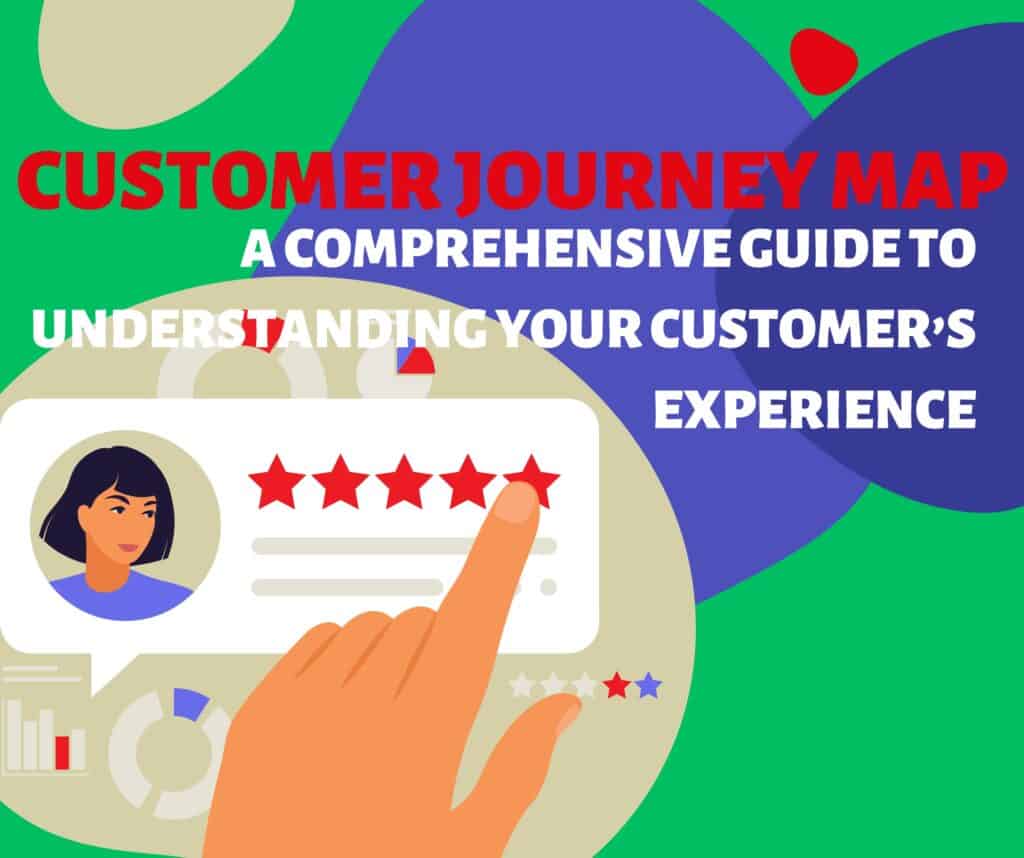Retail businesses play a crucial role in our daily lives and the broader economy. Defined as entities that sell goods or services directly to consumers, retail businesses encompass a wide range of formats, including traditional brick-and-mortar stores, online platforms, and hybrid models that blend both approaches. From clothing and electronics to groceries and home goods, retail businesses cater to diverse consumer needs and preferences, making them an integral part of the shopping experience.
The importance of retail in the economy cannot be overstated. Here are a few key points that highlight its significance:
- Economic Contribution: Retail is a major contributor to the global economy. In many countries, it accounts for a substantial portion of the Gross Domestic Product (GDP). The sector provides millions of jobs worldwide, ranging from sales associates to logistics and management roles, thereby supporting livelihoods and stimulating local economies.
- Consumer Access: Retail businesses serve as a vital link between manufacturers and consumers, facilitating the distribution of goods and services. They enable consumers to access a wide array of products conveniently and efficiently. This accessibility is crucial for driving consumer spending, which is a significant driver of economic growth.
- Innovation and Trends: The retail sector is often at the forefront of innovation. Retailers continuously adapt to changing consumer preferences and technological advancements. This adaptability not only enhances the shopping experience but also drives competition and encourages other industries to innovate, fostering overall economic development.
- Cultural Impact: Retail businesses shape consumer culture by influencing trends and preferences. They provide a platform for new products and brands, contributing to the diverse tapestry of consumer choices. This cultural dimension of retail can have lasting effects on community identity and cohesion.
Ready to unlock your potential? Click here to start your online business!
Try Wealthy Affiliate (For Free).
What Are Retail Businesses?
Retail businesses are enterprises that sell goods and services directly to consumers for personal use. They serve as the final link in the supply chain, connecting manufacturers and wholesalers with end-users. By purchasing products in bulk from suppliers and then selling them in smaller quantities, retail businesses make it convenient for consumers to access a wide range of products.
Definition of Retail Businesses
At its core, a retail business involves the sale of products or services to consumers. This can occur in various formats, including physical stores, online platforms, or a combination of both. Retailers can offer a broad selection of items, ranging from food and clothing to electronics and home goods. The retail sector is distinguished by its direct interaction with customers, making customer service and experience paramount to success.
Role in the Supply Chain
Retail businesses play a pivotal role in the supply chain, acting as intermediaries between producers and consumers. Here’s how they contribute to this essential economic process:
- Distribution: Retailers ensure that products reach consumers efficiently by managing logistics and inventory. They handle storage, packaging, and transportation, ensuring that items are available when and where customers need them.
- Market Access: Retailers provide manufacturers with access to a larger market. By establishing a physical or online presence, they make it easier for consumers to discover and purchase new products.
- Customer Insights: Retailers collect valuable data about consumer preferences and buying behaviors. This information can help manufacturers understand market demand and adjust their offerings accordingly.
- Value Addition: Retailers enhance products through merchandising, branding, and promotions, adding value that can influence consumer purchasing decisions. They create an appealing shopping environment, provide product information, and often offer customer support.
Examples of Retail Businesses
Retail businesses come in various forms, each catering to different consumer needs. Here are some common examples:
- Brick-and-Mortar Stores: These are physical retail locations where consumers can browse and purchase products in person. Examples include:
- Department Stores: Large establishments that offer a wide range of products, including clothing, home goods, and electronics (e.g., Macy’s, Nordstrom).
- Specialty Stores: Stores that focus on specific product categories, such as jewelry, electronics, or sporting goods (e.g., Best Buy, Foot Locker).
- Convenience Stores: Small stores that stock everyday items, often open for extended hours (e.g., 7-Eleven, Circle K).
- Online Retailers: E-commerce platforms that sell products directly to consumers via the internet. Examples include:
- Marketplaces: Platforms that connect buyers and sellers, allowing third-party sellers to list their products (e.g., Amazon, eBay).
- Direct-to-Consumer Brands: Companies that sell their products directly to consumers through their websites, bypassing traditional retail channels (e.g., Warby Parker, Casper).
- Hybrid Retail Models: Many retailers operate both physical and online stores to reach a broader audience. For instance:
- Click-and-Collect: Retailers that allow customers to purchase items online and pick them up in-store, combining the convenience of e-commerce with the immediacy of in-person shopping (e.g., Target, Walmart).
Types of Retail Businesses
The retail landscape is diverse, encompassing various types of businesses that cater to different consumer needs and shopping preferences. Each type of retail business has its unique characteristics, advantages, and challenges. Understanding these categories can help consumers make informed shopping choices and help aspiring retailers identify the best business model for their goals.
Brick-and-Mortar Stores
Brick-and-mortar stores refer to physical retail locations where customers can browse and purchase products in person. This traditional retail format offers several benefits, such as immediate product access and personal customer service. The main types of brick-and-mortar stores include:
- Department Stores:
- These large retail establishments typically offer a wide range of products organized into different departments, such as clothing, home goods, cosmetics, and electronics.
- Examples: Macy’s, Nordstrom, and JCPenney.
- Advantages: Department stores provide a one-stop shopping experience, allowing customers to find multiple product categories under one roof. They often offer promotional discounts and loyalty programs to attract repeat customers.
- Specialty Shops:
- Specialty stores focus on specific product categories, offering a curated selection of items tailored to niche markets.
- Examples: Apple Store (electronics), Sephora (beauty products), and PetSmart (pet supplies).
- Advantages: These stores typically provide expert knowledge and personalized service, enhancing the shopping experience. Customers often return for the specialized products and advice they can’t find elsewhere.
- Convenience Stores:
- Small retail outlets that sell everyday items, such as snacks, beverages, and basic groceries. They are often open for extended hours, making them easily accessible.
- Examples: 7-Eleven, Circle K, and local gas station convenience stores.
- Advantages: Convenience stores cater to customers looking for quick, on-the-go shopping. Their locations are often strategically placed to capture foot traffic, providing a steady flow of customers.
Online Retailers
The rise of the internet has transformed the retail landscape, leading to the emergence of online retailers. These businesses sell products directly to consumers through e-commerce websites or applications, offering convenience and a wider selection of products. Key types of online retailers include:
- E-commerce Platforms:
- These are online marketplaces that connect buyers and sellers, allowing individuals and businesses to sell products to a broad audience.
- Examples: Amazon, eBay, and Alibaba.
- Advantages: E-commerce platforms enable sellers to reach global markets without the need for physical storefronts. Consumers benefit from competitive pricing, a vast selection of products, and user reviews that aid purchasing decisions.
- Direct-to-Consumer Brands:
- Companies that sell their products directly to consumers through their websites, bypassing traditional retail channels. This model allows for greater control over branding, pricing, and customer relationships.
- Examples: Warby Parker (eyewear), Casper (mattresses), and Glossier (beauty products).
- Advantages: Direct-to-consumer brands often provide a more personalized shopping experience and can gather valuable customer data to tailor marketing strategies. They may also offer lower prices by eliminating middlemen.
Hybrid Retail Models
Hybrid retail models combine both brick-and-mortar and online shopping experiences, allowing businesses to reach customers through multiple channels. This approach can enhance customer convenience and broaden market reach. Common hybrid models include:
- Click-and-Collect Options:
- Retailers that offer customers the ability to shop online and pick up their purchases in-store. This model combines the convenience of online shopping with the immediacy of physical retail.
- Examples: Target, Walmart, and Best Buy.
- Advantages: Click-and-collect reduces shipping costs and time for consumers while driving foot traffic to physical stores, where customers may make additional purchases during their visit.
- Social Media Shopping:
- Retailers that leverage social media platforms to sell products directly to consumers. Features like shoppable posts and in-app checkout make it easier for customers to browse and buy without leaving the platform.
- Examples: Instagram Shopping, Facebook Marketplace, and Pinterest Buyable Pins.
- Advantages: Social media shopping taps into the growing trend of social commerce, allowing brands to engage with consumers in a familiar environment. It also enables targeted advertising and personalized recommendations based on user interests.
Current Trends in Retail Businesses
The retail industry is constantly evolving, influenced by changing consumer preferences, technological advancements, and global challenges. Understanding current trends is essential for retailers aiming to stay competitive and meet customer expectations. This section explores three significant trends reshaping the retail landscape: e-commerce growth, sustainability, and technology integration.
E-Commerce Growth
E-commerce has experienced unprecedented growth, significantly altering how consumers shop and interact with brands. Several factors contribute to this trend:
- Increase in Online Shopping:
- The shift toward online shopping has accelerated due to factors like convenience, time-saving, and access to a broader range of products. The COVID-19 pandemic further accelerated this trend as consumers turned to online platforms to avoid physical stores.
- According to recent statistics, global e-commerce sales reached approximately $5 trillion in 2021 and are projected to continue growing as more consumers embrace online shopping.
- Key Implications: Retailers are investing heavily in their online presence, optimizing websites for user experience, and improving logistics to handle increased demand.
- Mobile Commerce:
- Mobile commerce, or m-commerce, refers to shopping conducted via smartphones and tablets. With the rise of mobile payment options and the increasing use of mobile devices, this trend is becoming increasingly prominent.
- Many retailers are developing mobile apps and optimizing websites for mobile users to enhance the shopping experience. Features like one-click purchasing and personalized recommendations are becoming standard in mobile commerce.
- Key Implications: Retailers need to prioritize mobile optimization to cater to the growing number of consumers shopping on their devices.
Affiliate Disclosure: This post includes affiliate links, meaning I may earn a commission if you purchase through them. These links offer valuable tools and support to help you succeed online.
Try Wealthy Affiliate (For Free).
Sustainability
Sustainability is more than just a buzzword; it is now a core value for many consumers, influencing their purchasing decisions. Retailers are responding to this demand in several ways:
- Eco-Friendly Products and Practices:
- Retailers are increasingly offering eco-friendly products, such as sustainably sourced materials, organic ingredients, and biodegradable packaging. This shift aligns with a broader trend toward conscious consumerism, where shoppers seek products that minimize environmental impact.
- Many retailers are also adopting sustainable practices in their operations, including reducing waste, improving energy efficiency, and sourcing materials responsibly.
- Key Implications: Retailers that prioritize sustainability can differentiate themselves in a competitive market, attract environmentally conscious consumers, and contribute to a more sustainable future.
- Consumer Demand for Sustainable Brands:
- Research shows that a significant portion of consumers are willing to pay a premium for sustainable products. Brands that emphasize their commitment to sustainability often enjoy stronger customer loyalty and brand affinity.
- Retailers are leveraging sustainability in their marketing strategies, highlighting their eco-friendly initiatives to resonate with consumers who prioritize ethical consumption.
- Key Implications: Retailers must actively communicate their sustainability efforts and engage with consumers on social and environmental issues to build trust and loyalty.
Technology Integration
The integration of technology in retail is reshaping how businesses operate and engage with customers. Innovative technologies enhance the shopping experience, streamline operations, and provide valuable insights. Key aspects of this trend include:
- Use of AI and Analytics:
- Retailers are increasingly utilizing artificial intelligence (AI) and data analytics to understand consumer behavior, optimize inventory, and personalize marketing efforts. AI-powered chatbots provide instant customer support, while predictive analytics help retailers forecast demand and adjust their strategies accordingly.
- Personalization is becoming a key driver of customer engagement, with retailers using AI to analyze shopping habits and tailor recommendations for individual consumers.
- Key Implications: Retailers that harness AI and analytics can enhance customer experiences, increase sales, and make data-driven decisions to improve operations.
- Virtual and Augmented Reality Experiences:
- Virtual reality (VR) and augmented reality (AR) are revolutionizing the retail experience by providing immersive shopping environments. These technologies allow consumers to visualize products in their own space or try on items virtually before making a purchase.
- Retailers such as IKEA have implemented AR apps that let customers see how furniture will look in their homes, while beauty brands offer virtual try-on features for cosmetics.
- Key Implications: By integrating VR and AR, retailers can create engaging experiences that enhance consumer confidence in their purchasing decisions and reduce return rates.
Challenges Facing Retail Businesses
While the retail industry presents numerous opportunities, it also faces significant challenges that can impact profitability and growth. Understanding these challenges is essential for retailers looking to navigate the complex landscape effectively. This section explores three major challenges: competition, economic factors, and supply chain issues.
Competition
Competition is a persistent challenge in the retail sector, driven by the rapid evolution of consumer preferences and technological advancements. Key aspects of this challenge include:
- Rise of Online Retailers:
- The explosive growth of online retail has created intense competition for traditional brick-and-mortar stores. E-commerce giants like Amazon have set high customer expectations regarding pricing, convenience, and selection, compelling traditional retailers to adapt quickly.
- Consumers can now compare prices and products easily, leading to increased price sensitivity and pressure on profit margins. Retailers that fail to establish a robust online presence may struggle to attract and retain customers.
- Key Implications: Traditional retailers must invest in their online platforms, implement effective digital marketing strategies, and enhance customer experiences to compete with online retailers.
- Market Saturation:
- Many retail sectors are experiencing market saturation, with numerous players vying for the same consumer base. This saturation leads to fierce competition for market share, making it challenging for retailers to differentiate themselves.
- Retailers must continuously innovate and find unique selling propositions (USPs) to stand out in a crowded market. Failure to do so may result in reduced sales and declining brand loyalty.
- Key Implications: Retailers should focus on building strong brand identities, engaging in targeted marketing, and developing niche offerings to combat saturation.
Economic Factors
Economic conditions significantly influence consumer behavior and retail performance. Retailers must navigate various economic factors that can affect their operations, including:
- Impact of Inflation:
- Inflation can lead to rising costs for retailers, including increased prices for raw materials, transportation, and labor. These rising costs may force retailers to pass on price increases to consumers, potentially reducing demand.
- In an inflationary environment, consumers may become more price-conscious, seeking discounts and value-oriented products. This shift can impact retailers’ profit margins and sales volumes.
- Key Implications: Retailers need to implement effective pricing strategies and cost-control measures to mitigate the effects of inflation and maintain customer loyalty.
- Changes in Consumer Spending Habits:
- Economic uncertainty can lead to shifts in consumer spending habits. During challenging economic times, consumers may prioritize essential goods and services over discretionary spending, impacting retailers across various sectors.
- Retailers must stay attuned to changing consumer preferences and adjust their product offerings and marketing strategies accordingly. This adaptability is crucial for maintaining sales and customer engagement.
- Key Implications: Retailers should conduct regular market research to understand evolving consumer behaviors and align their strategies with current trends.
Supply Chain Issues
Supply chain disruptions have become a significant concern for retailers, especially in recent years. These disruptions can hinder operations and impact customer satisfaction. Key challenges include:
- Disruptions in Logistics:
- Natural disasters, geopolitical tensions, and pandemics can disrupt logistics and transportation networks, leading to delays in product delivery and increased shipping costs.
- Retailers may experience stockouts or inventory shortages, frustrating customers and potentially leading to lost sales. Efficient logistics management is critical for maintaining a reliable supply chain.
- Key Implications: Retailers should invest in robust supply chain management systems and diversify their suppliers to minimize the impact of disruptions.
- Inventory Management Challenges:
- Effective inventory management is essential for meeting customer demand while minimizing excess stock and associated carrying costs. However, many retailers struggle to strike this balance.
- Issues such as overstocking or stockouts can lead to lost sales and increased markdowns, impacting profitability. Retailers must leverage technology and analytics to optimize inventory levels and forecasting.
- Key Implications: Retailers should adopt advanced inventory management solutions and data analytics to enhance their forecasting accuracy and improve overall efficiency.
Make your financial freedom a reality. Start your business now!
Try Wealthy Affiliate (For Free).
Strategies for Success in Retail
In a competitive and ever-evolving retail landscape, businesses must adopt effective strategies to thrive. This section discusses key strategies for success, focusing on customer experience enhancement, effective marketing tactics, and robust inventory and supply chain management.
Customer Experience Enhancement
Creating a positive customer experience is essential for building loyalty and driving sales. Retailers can enhance customer experience through the following strategies:
- Personalization and Engagement:
- Personalization involves tailoring the shopping experience to individual preferences and behaviors. This can be achieved through targeted marketing campaigns, personalized product recommendations, and customized communications.
- Retailers can use customer data and analytics to understand buying patterns, enabling them to create personalized offers that resonate with their target audience. For example, using past purchase history to suggest related products can significantly enhance the shopping experience.
- Key Implications: By prioritizing personalization, retailers can increase customer satisfaction, improve retention rates, and drive repeat purchases.
- Omnichannel Strategies:
- An omnichannel approach integrates various shopping channels (physical stores, online platforms, mobile apps) to provide a seamless customer experience. This strategy allows customers to interact with the brand through multiple touchpoints, enhancing convenience and flexibility.
- Retailers should ensure that their branding, messaging, and customer service remain consistent across all channels. For instance, allowing customers to buy online and pick up in-store (BOPIS) can bridge the gap between online and offline shopping experiences.
- Key Implications: Implementing an omnichannel strategy can enhance customer loyalty, as shoppers appreciate the ability to choose how and when they shop.
Effective Marketing Tactics
Marketing plays a crucial role in attracting and retaining customers. Retailers can implement various effective marketing tactics to enhance brand visibility and engagement:
- Social Media Marketing:
- Social media platforms provide an invaluable opportunity for retailers to connect with their target audience. Engaging content, such as promotions, product showcases, and user-generated content, can drive brand awareness and engagement.
- Retailers should leverage different platforms (Instagram, Facebook, TikTok) based on their target demographics and utilize features like stories, reels, and live videos to showcase products and interact with followers.
- Key Implications: A strong social media presence can enhance brand visibility, foster customer loyalty, and ultimately drive sales.
- Influencer Partnerships:
- Collaborating with influencers can help retailers reach new audiences and build credibility. Influencers often have loyal followers who trust their recommendations, making them powerful advocates for brands.
- Retailers can engage influencers to promote products through reviews, unboxings, or sponsored content. This strategy not only expands brand reach but also creates authentic connections with potential customers.
- Key Implications: Influencer partnerships can enhance brand reputation, drive traffic to online and physical stores, and increase conversion rates.
Inventory and Supply Chain Management
Efficient inventory and supply chain management are critical for ensuring product availability and minimizing costs. Retailers can adopt the following strategies to enhance efficiency:
- Leveraging Technology for Efficiency:
- Implementing technology solutions, such as inventory management software, can streamline operations and improve accuracy. These tools enable retailers to track stock levels in real-time, automate reordering processes, and reduce human errors.
- Technologies like RFID (Radio-Frequency Identification) and IoT (Internet of Things) can provide better visibility into inventory, allowing for improved tracking and management across the supply chain.
- Key Implications: Utilizing technology for inventory management can enhance operational efficiency, reduce carrying costs, and improve customer satisfaction through better product availability.
- Forecasting Demand Accurately:
- Accurate demand forecasting is essential for optimizing inventory levels and preventing stockouts or overstock situations. Retailers can use historical sales data, market trends, and seasonal patterns to inform their forecasting processes.
- Advanced analytics and machine learning can improve forecasting accuracy by analyzing multiple variables and providing insights into future demand. This proactive approach helps retailers adjust their inventory strategies accordingly.
- Key Implications: Effective demand forecasting can lead to improved inventory turnover rates, reduced costs, and enhanced customer satisfaction through timely product availability.
Conclusion
Understanding the intricacies of retail businesses is vital for anyone involved in or entering this dynamic industry. Retail plays a crucial role in the economy, serving as the direct link between producers and consumers, driving employment, and fueling economic growth. Whether it’s a small local shop or a global e-commerce giant, retail businesses are the backbone of consumer markets.
However, success in retail requires more than just offering great products or services. It demands a deep understanding of market trends, customer preferences, and evolving technologies. As competition increases—especially with the rise of online platforms—and as economic factors and supply chain challenges continue to pose threats, retailers must stay vigilant and adaptable.
Success is not found, it’s built. Click here to start building yours today!
Try Wealthy Affiliate (For Free).
Embracing current trends, such as the growth of e-commerce, the push for sustainability, and the integration of new technologies, can position retailers for success. Those who invest in enhancing customer experiences, leverage effective marketing strategies, and optimize inventory and supply chain management will be better equipped to thrive.
The future of retail is promising but also uncertain. In a rapidly changing landscape where digital transformation is reshaping customer expectations, only those who remain agile and responsive to new challenges will survive. Retailers who prioritize innovation, continuously adapt to consumer behaviors, and embrace change will have the best chances of long-term success.
In the ever-evolving world of retail, the ability to anticipate trends, navigate challenges, and offer exceptional customer experiences will determine which businesses rise to the top. Now is the time for retailers to sharpen their strategies and position themselves for a future full of possibilities.
We’d love to hear from you! What strategies have you found most effective in your retail business? Have you faced challenges that you overcame, or do you have questions about navigating the retail landscape? Share your experiences and insights in the comments below. Your contributions could help fellow readers enhance their understanding of retail businesses and find new ways to succeed. Join the conversation!







